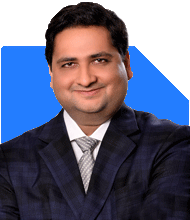Omkeshwar Singh | Answer |Ask -Follow
Head, Rank MF - Answered on Apr 07, 2022

I am 33 year old & investing in MF from the last 5 years which have accumulated 20 lacs (market value) in my portfolio as on date. Currently I am investing 40000 PM through SIP route & my current portfolio is:
ELSS:
1. Axis Long Term Equity- Direct Growth - 5000 SIP Monthly
2. DSP Tax Saver- Direct Growth - 5000 SIP Monthly
Large Cap:
1. HDFC Index Fund Sensex Plan- Direct Growth - 5000 SIP Monthly
2. Axis Bluechip- Direct Growth - 5000 SIP Monthly
Mid Cap:
1. HDFC Mid-Cap Opportunities- Direct Growth - 5000 SIP Monthly
2. Mirae Asset Emerging Bluechip- Direct growth- 2500 SIP Monthly
Small Cap:
1. SBI Small Cap- Direct Growth - 5000 SIP Monthly
2. DSP Small Cap- Direct Growth - 5000 SIP Monthly
Thematic:
1. ABSL Banking & Financial Services- Direct Growth- 2500 SIP Monthly
Liquid:
1. ABSL Liquid Fund- 2 Lacs LumSum for emergency use
I want to accumulate 1.5 crore at the age of 40 & expecting 15-18% CAGR for next 7 years from my current investment. Please guide me whether I am on the right track or do I need to make any changes in my portfolio?
I can increase my by 5% each year.
Basic thumb rule is risk free returns (10 years govt bond returns) + inflation + equity risk premium
You may like to see similar questions and answers below
Omkeshwar Singh | Answer |Ask -Follow
Head, Rank MF - Answered on May 26, 2021
Ulhas Joshi |280 Answers |Ask -Follow
Mutual Fund Expert - Answered on Jun 28, 2023
Hardik Parikh | Answer |Ask -Follow
Tax, Mutual Fund Expert - Answered on Apr 05, 2023
Milind Vadjikar | Answer |Ask -Follow
Insurance, Stocks, MF, PF Expert - Answered on Oct 29, 2024
Radheshyam Zanwar |6736 Answers |Ask -Follow
MHT-CET, IIT-JEE, NEET-UG Expert - Answered on Dec 06, 2025

Good luck.
Follow me if you receive this reply.
Radheshyam
Dr Nagarajan J S K |2576 Answers |Ask -Follow
NEET, Medical, Pharmacy Careers - Answered on Dec 06, 2025
Mihir Tanna |1090 Answers |Ask -Follow
Tax Expert - Answered on Dec 06, 2025
Ramalingam Kalirajan |10872 Answers |Ask -Follow
Mutual Funds, Financial Planning Expert - Answered on Dec 06, 2025
Radheshyam Zanwar |6736 Answers |Ask -Follow
MHT-CET, IIT-JEE, NEET-UG Expert - Answered on Dec 06, 2025
Radheshyam Zanwar |6736 Answers |Ask -Follow
MHT-CET, IIT-JEE, NEET-UG Expert - Answered on Dec 06, 2025
Radheshyam Zanwar |6736 Answers |Ask -Follow
MHT-CET, IIT-JEE, NEET-UG Expert - Answered on Dec 06, 2025
Dr Dipankar Dutta |1837 Answers |Ask -Follow
Tech Careers and Skill Development Expert - Answered on Dec 05, 2025
Dr Shyam Jamalabad |108 Answers |Ask -Follow
Dentist - Answered on Dec 05, 2025
Dr Shyam Jamalabad |108 Answers |Ask -Follow
Dentist - Answered on Dec 05, 2025





























